Botanical Gardens in Sri Lanka
From exotic flora to serene landscapes
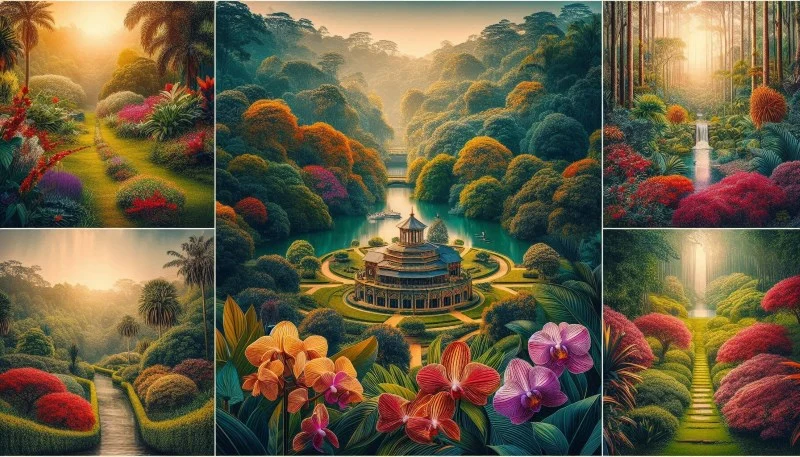
Comprehensive Guide to Botanical Gardens in Sri Lanka
Sri Lanka, known for its rich biodiversity, is home to several breathtaking botanical gardens that offer both educational and recreational experiences. The gardens are spread across different climatic zones, showcasing a variety of flora and unique attractions. Here’s an in-depth look at five of Sri Lanka’s most famous botanical gardens, what tourists can learn, ideal clothing suggestions, best visiting times, and more.
01. Hakgala Botanical Garden
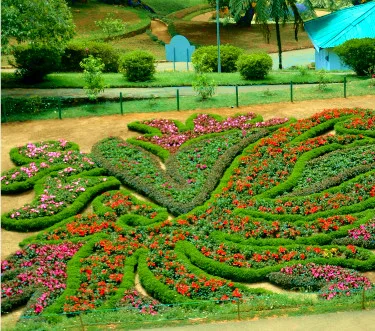
Location
Hakgala Botanical Garden is located 16 km from Nuwara Eliya, in the central highlands of Sri Lanka. Situated at an elevation of about 1,700 meters above sea level, this garden enjoys a cool, temperate climate.
What You Can Learn as a Tourist
- Flora of Temperate and Subtropical Regions: Hakgala is famous for its extensive collection of sub-tropical and temperate plant species. Visitors can explore its vast collection of roses, orchids, and ferns.
- Botanical History: Originally established as a Cinchona plantation (the source of quinine), Hakgala has evolved into a research and conservation garden, perfect for those interested in botany and horticulture.
Ideal Clothing
- Due to the garden’s cool climate, especially in the mornings and evenings, it’s best to wear light layers that can be removed or added as needed.
- Comfortable walking shoes are essential, as the garden is expansive and includes hilly terrain.
Best Time to Visit
- The best time to visit Hakgala is from April to August when the flowers are in full bloom.
- Morning visits are preferable as the mist lifts and the views are clearer.
Activities and Experiences
- Guided Nature Walks: Learn more about the flora from the experts.
- Photography: The diverse plant species and scenic mountain backdrop make for excellent photography opportunities.
- Picnic Areas: There are designated spots for a relaxing day out amidst nature.
2. Henarathgoda Botanical Garden
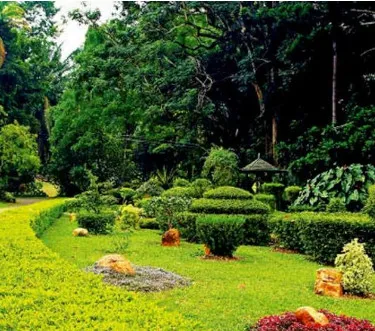
Location
Located in Gampaha, just 30 km from Colombo, Henarathgoda Botanical Garden is one of the oldest in Sri Lanka, originally established to cultivate rubber plants.
What You Can Learn as a Tourist
- Rubber Plant Cultivation: Henarathgoda is historically significant for its role in the introduction of rubber to Sri Lanka. Tourists can learn about the evolution of rubber cultivation here.
- Tropical Plant Species: The garden is home to an impressive collection of tropical trees, palms, and medicinal plants.
- Birdwatching: The garden also attracts various bird species, offering a unique experience for bird lovers.
Ideal Clothing
- The garden is located in a tropical region, so lightweight, breathable clothing like cotton shirts and shorts are recommended.
- Hats and sunscreen are advisable to protect against the sun, especially during midday.
Best Time to Visit
- The ideal time to visit is during the cooler months from November to March to avoid the peak of the tropical heat.
- Early mornings or late afternoons are best for birdwatching and nature walks.
Activities and Experiences
- Educational Tours: Learn about the history of rubber in Sri Lanka and the garden’s botanical heritage.
- Nature Trails: Explore various trails that lead you through different sections of the garden, showcasing its diverse flora.
- Relax by the Pond: The scenic pond area is a great spot to relax or take photos.
3. Mirijjawila Dry Zone Botanical Garden
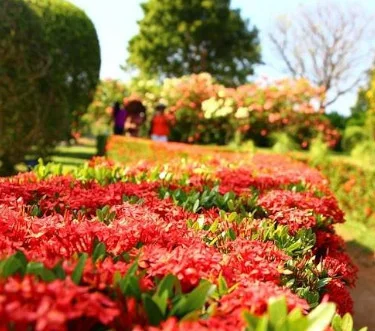
Location
Mirijjawila Botanical Garden is located in Hambantota in the southern dry zone of Sri Lanka. This garden is designed to showcase plants that thrive in arid conditions.
What You Can Learn as a Tourist
- Drought-Resistant Flora: Visitors can learn about the diverse plant species that survive in dry and semi-arid environments.
- Conservation Efforts: The garden plays an essential role in the conservation of rare and endangered dry zone plant species, offering insights into sustainable plant cultivation.
Ideal Clothing
- Given the hot and dry climate, it’s best to wear light, breathable fabrics and a wide-brimmed hat for sun protection.
- Comfortable sandals or walking shoes are recommended for exploring the garden’s dry and sandy terrain.
Best Time to Visit
- The garden can be visited year-round, but early mornings and late afternoons are the most comfortable times to explore, as midday temperatures can be quite high.
Activities and Experiences
- Eco-Tours: Learn about sustainable dry zone gardening practices and the importance of water conservation.
- Birdwatching: The garden is home to several species of birds, making it a great spot for wildlife enthusiasts.
- Picnicking: Designated picnic areas offer a relaxing break amid nature.
4. Royal Botanical Gardens Peradeniya
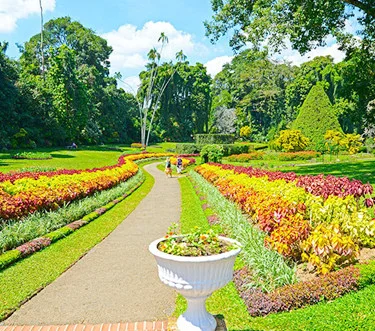
Location
The Royal Botanical Gardens, located just outside Kandy in the hill country, is the largest and most famous botanical garden in Sri Lanka.
What You Can Learn as a Tourist
- Exotic Plant Species: The garden is home to more than 4,000 species of plants, including a vast collection of orchids, spices, medicinal plants, and palm trees.
- Historical Significance: The garden has a rich history dating back to the Kandyan monarchy, making it a treasure trove of botanical and cultural knowledge.
- Botanical Research: Peradeniya serves as a key center for botanical research in Sri Lanka, and visitors can learn about ongoing conservation efforts.
Ideal Clothing
- The weather in Kandy can be quite mild, so comfortable, casual clothing is suitable.
- Light rain gear is recommended if you’re visiting during the rainy season (October to December).
Best Time to Visit
- January to April is the best time to visit when the weather is pleasant and the flowers are in full bloom.
- Visit in the early morning to avoid crowds and enjoy the serene beauty of the garden.
Activities and Experiences
- Orchid House: Visit the dedicated section for orchids, which features a dazzling array of rare species.
- Great Lawn: Marvel at the century-old Java fig tree with its sprawling canopy.
- Guided Tours: Take a guided walk to learn about the garden’s history and its unique plants.
- Avenue of Palms: Stroll down the majestic palm-lined paths, ideal for a leisurely walk and photography.
5. Seethawaka Wet Zone Botanical Garden
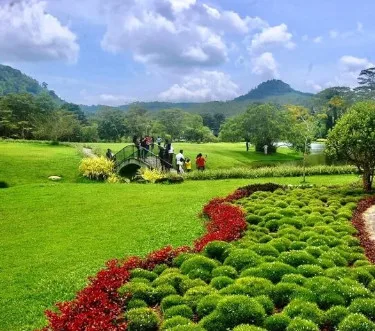
Location
Seethawaka Botanical Garden is located in the wet zone of Avissawella, approximately 50 km from Colombo.
What You Can Learn as a Tourist
- Wet Zone Flora: This garden highlights the biodiversity of Sri Lanka’s wet zone, including a wide variety of aquatic plants, orchids, and ferns.
- Conservation of Endangered Species: The garden is involved in the conservation of rare wet-zone plants, which are under threat due to habitat destruction.
Ideal Clothing
- Given the wet and humid climate, light, quick-drying clothing is ideal.
- Waterproof shoes or sandals are a good option, as some areas of the garden may be damp.
Best Time to Visit
- The best time to visit is during the dry season, from January to March, when there is less rainfall, making the garden easier to explore.
- Morning visits are recommended to enjoy the cool air and avoid the afternoon humidity.
Activities and Experiences
- Lake Views: The garden features a serene lake surrounded by lush greenery, perfect for a tranquil walk.
- Nature Trails: Explore the various trails that meander through the garden, offering scenic views of the wet zone flora.
- Birdwatching: The garden is a haven for birdlife, especially early in the morning or late afternoon.
Add Your Heading Text Here
What is the best time of year to visit Sri Lanka’s botanical gardens?
The best time to visit most gardens is from January to April, as this is when the weather is most pleasant. However, gardens in the wet and dry zones may have specific visiting recommendations, so check before you travel. Are there guided tours available in these botanical gardens?
Yes, most botanical gardens, including Peradeniya and Hakgala, offer guided tours where you can learn in-depth information about the plants and the history of the gardens. What should I wear when visiting botanical gardens in Sri Lanka?
Light, breathable clothing is recommended for tropical and dry zone gardens. For cooler gardens like Hakgala, bring layers. Always wear comfortable walking shoes. Are botanical gardens suitable for families and children?
Absolutely! Many gardens have picnic areas, open lawns, and guided walks that are perfect for families and children. The Royal Botanical Gardens in Peradeniya is especially popular for family outings. Can I visit the botanical gardens during the rainy season?
Yes, though it may be less enjoyable due to the rain. If you plan to visit during the rainy season, particularly at Seethawaka, rain gear and waterproof shoes are essential. What are some must-see attractions in the Royal Botanical Gardens Peradeniya?
Don’t miss the Orchid House, the Avenue of Palms, and the Great Lawn featuring the iconic Java fig tree.
The best time to visit most gardens is from January to April, as this is when the weather is most pleasant. However, gardens in the wet and dry zones may have specific visiting recommendations, so check before you travel.
Yes, most botanical gardens, including Peradeniya and Hakgala, offer guided tours where you can learn in-depth information about the plants and the history of the gardens.
Light, breathable clothing is recommended for tropical and dry zone gardens. For cooler gardens like Hakgala, bring layers. Always wear comfortable walking shoes.
Absolutely! Many gardens have picnic areas, open lawns, and guided walks that are perfect for families and children. The Royal Botanical Gardens in Peradeniya is especially popular for family outings.
Yes, though it may be less enjoyable due to the rain. If you plan to visit during the rainy season, particularly at Seethawaka, rain gear and waterproof shoes are essential.
Don’t miss the Orchid House, the Avenue of Palms, and the Great Lawn featuring the iconic Java fig tree.





